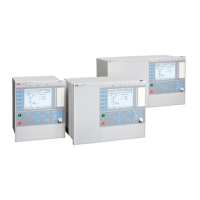Section 2 Requirements
About this chapter
This chapter describes current and voltage transformer requirements.
2.1 Current transformer requirements
The performance of a protection function will depend on the quality of the measured
current signal. Saturation of the current transformer (CT) will cause distortion of the
current signal and can result in a failure to operate or cause unwanted operations of
some functions. Consequently CT saturation can have an influence on both the
dependability and the security of the protection. This protection IED has been designed
to permit heavy CT saturation with maintained correct operation.
2.1.1 Current transformer classification
To guarantee correct operation, the current transformers (CTs) must be able to
correctly reproduce the current for a minimum time before the CT will begin to
saturate. To fulfill the requirement on a specified time to saturation the CTs must fulfill
the requirements of a minimum secondary e.m.f. that is specified below.
There are several different ways to specify CTs. Conventional magnetic core CTs are
usually specified and manufactured according to some international or national
standards, which specify different protection classes as well. There are many different
standards and a lot of classes but fundamentally there are three different types of CTs:
• High remanence type CT
• Low remanence type CT
• Non remanence type CT
The high remanence type has no limit for the remanent flux. This CT has a magnetic
core without any airgap and a remanent flux might remain almost infinite time. In this
type of transformers the remanence can be up to around 80% of the saturation flux.
Typical examples of high remanence type CT are class P, PX, TPS, TPX according to
IEC, class P, X according to BS (old British Standard) and non gapped class C, K
according to ANSI/IEEE.
1MRK504116-UUS C Section 2
Requirements
19
Application manual

